ENGAGEMENT THE PARTYGEFFEN PLYHOUSE



SCENIC DESIGNER ALEXANDER DODGE
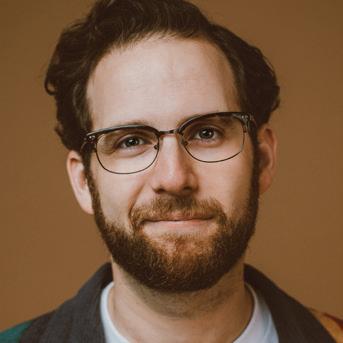
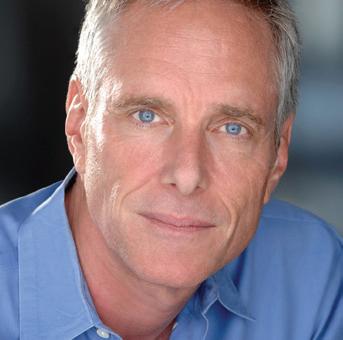
LIGHTING DESIGNER MATTHEW RICHARDS

UNDERSTUDY DIRECTOR VELANI DIBBA
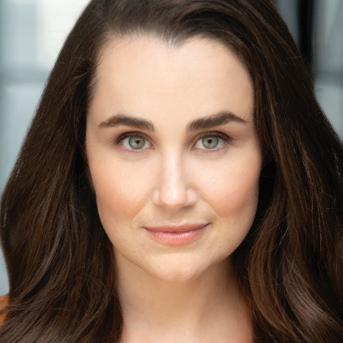
PRODUCTION STAGE MANAGER EDWARD KHRIS FERNANDEZ
ASSISTANT STAGE MANAGER MIKAYLA BETTNER
CAST
COSTUME DESIGNER JOSHUA PEARSON

ORIGINAL MUSIC & SOUND DESIGN BY JANE SHAW
INTIMACY & FIGHT DIRECTOR SASHA NICOLLE SMITH
CASTING DIRECTOR PHYLLIS SCHURINGA‚ CSA
RICHARD BEKINS CONRAD
BELLA HEATHCOTE KATHERINE
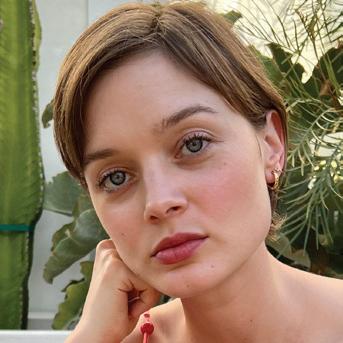
BRIAN LEE HUYNH KAI
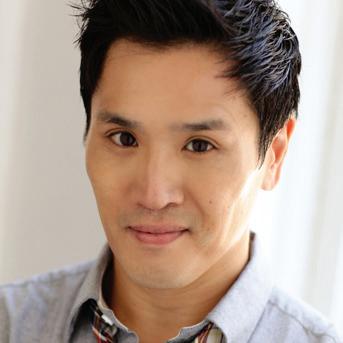
MARK JACOBSON ALAN
WENDIE MALICK GAIL
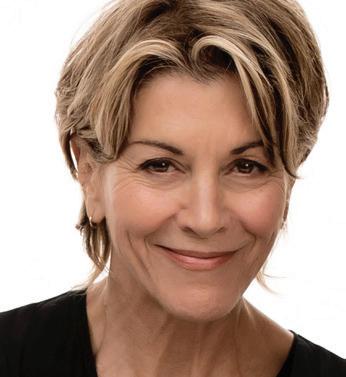
BRIAN PATRICK MURPHY JOHNNY
JONAH PLATT JOSH
LAUREN WORSHAM HALEY
The champagne is on ice, the hors d’oeuvres are perfectly arranged, and the table is exquisitely set. At a swank Park Avenue apartment, a young couple is celebrating their engagement with an intimate gathering of family and friends. When a glass of wine is spilled, the night takes an unexpected turn, unleashing a spiraling sequence of events and revelations that will irrevocably change their lives.
RUNNING TIME 80 minutes, no intermission.
PRODUCTION NOTES Contains profanity.
SAMUEL BAUM Playwright
Samuel Baum is a playwright, screenwriter, and producer. He is thrilled to be collaborating with Geffen Playhouse on the West Coast premiere of his play, The Engagement Party, directed by Tony Award winner Darko Tresnjak. The play was originally produced at Hartford Stage, where it received four Critics Circle Awards, an Edgerton Foundation New Play Award, and grants from the National Endowment for the Arts and the Laurents/Hatcher Foundation. As a screenwriter, Baum was nominated for a WGA Award for the Emmy–nominated HBO Film

The Wizard of Lies, starring Robert DeNiro. Previously, Baum created and executive produced the Fox television drama Lie to Me, which ran for three seasons. He also co-created and executive produced the ABC series The Evidence, as well as television pilots for Amazon, Netflix, Showtime, and CBS. He is currently an executive producer of the NBC series The Irrational, inspired by the work of behavioral psychologist Dan Ariely. Originally from New York, Baum is a graduate of Harvard College.
Darko Tresnjak directed the world premiere of The Engagement Party at Hartford Stage, where he was the Artistic Director from 2011-2019. Favorite productions: A Gentleman’s Guide to Love and Murder (Tony, Drama Desk, Outer Critics Circle, LA Drama Critics Circle, SD Critics Circle, CT Critics Circle awards), The Killer with Michael Shannon at Theatre for a New Audience (2015 Obie Award), The Ghost of Versailles with Patti LuPone and Patricia Racette at Los Angeles Opera, Rear Window with Kevin Bacon at Hartford Stage, The Merchant of Venice with Kate Forbes and F. Murray Abraham at TFANA and the RSC, Titus Andronicus with John Vickery and Dion Johnstone at the Stratford Festival, Cyrano de Bergerac with Patrick Page at The Old Globe, The Skin of Our Teeth with Marian Seldes at Williamstown Theatre Festival, and Anastasia (Broadway, National Tour, Spain, Germany, Netherlands, Brazil, Japan, Mexico). Upcoming productions: Russian Troll Farm by Sarah Gancher, Noir by Kyle Jarrow and Duncan Sheik, and Der Zwerg at Los Angeles Opera with Rodrick Dixon. He wrote the book and the lyrics of a new musical comedy, Ask for the Moon, with the composer Oran Eldor You can find out more about Darko, his work, and his French bulldogs, Hector Berlioz and Bruce, on Instagram @darkotresnjak.
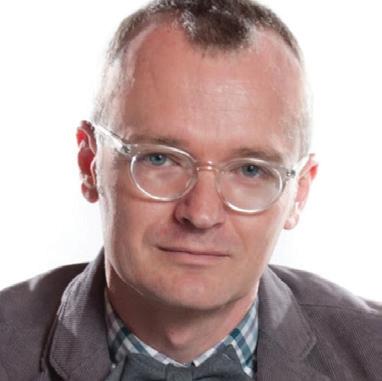
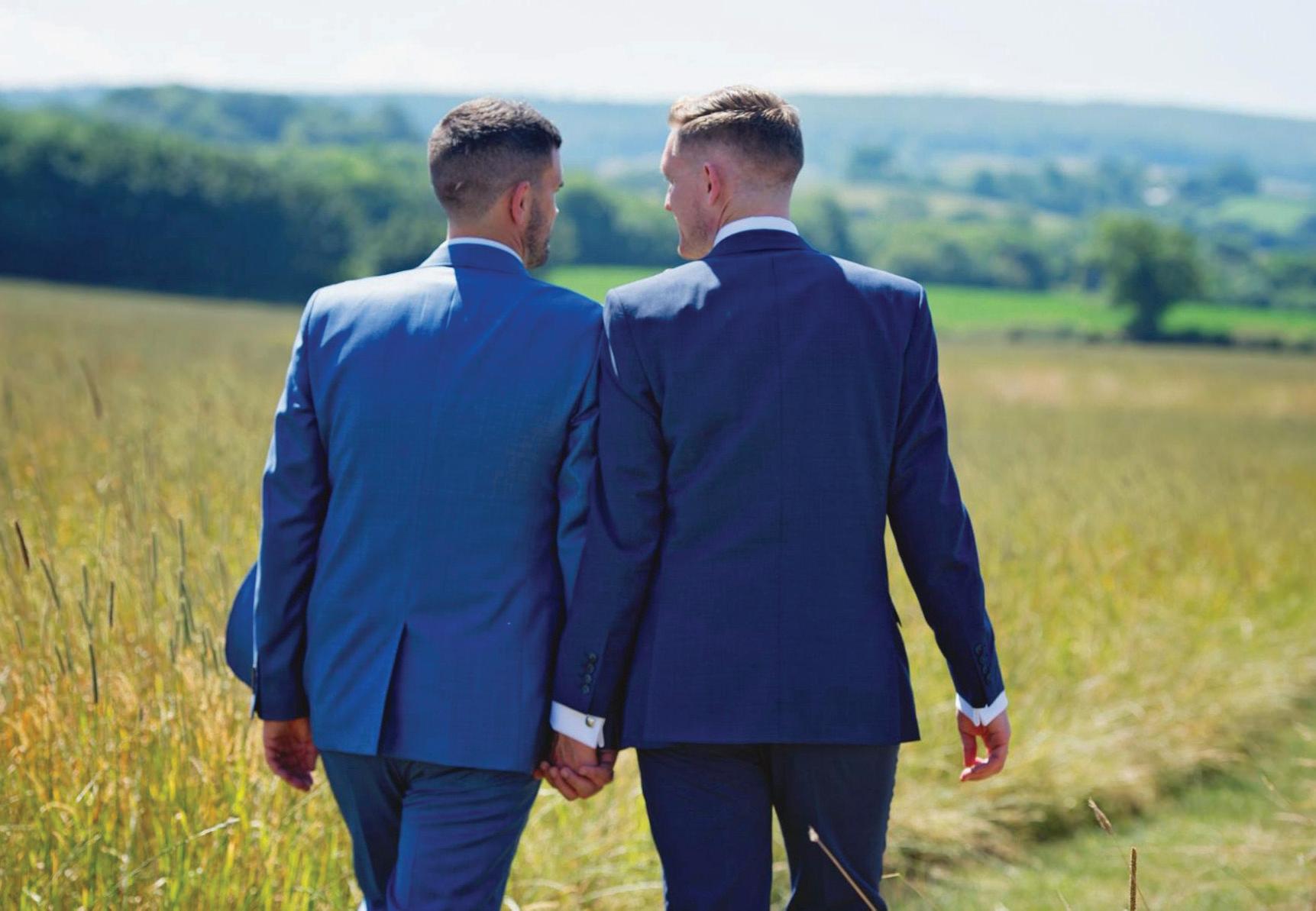
Couplehood has been, from the dawn of human history, the primary social structure of our species, giving rise to larger structures of family, community, society, culture, and civilization. But interest in helping couples improve the quality of their relationships is a very recent phenomenon. What help couples got in the past came from their families or social institutions, primarily religious ones. But given that what happens in the home determines what happens in society, and given the perennial presence of conflict and violence between partners and among groups and cultures, we can conclude that the help was not very helpful. If we operate from the logical premise that healthy couples are
SOURCE
essential to a healthy society, and vice versa, then “helping couples” should be elevated from a romantic sentiment—and a professional career—to a primary social value. The best thing a society can do for itself is to promote and support healthy couples, and the best thing partners can do for themselves, for their children, and for society is to have a healthy relationship.
The radical position of shifting focus from personal-centered needs to the needs of their relationship, and by extension, to the transformation of society, has been in the making only in the last 25 years or so. Prehistoric couples formed a “pair bond” for the
Article by Harville Hendrix, adapted from his foreword to Stan Tatkin’s book Wired for Love. Read the original story in PsychologyToday at tinyurl.com/bdtp4aae.
COMMON LAW MARRIAGE: An informal marriage and legal network that makes people married due to living together for a period of time.
COUSIN MARRIAGE: A marriage between cousins. 26 states allow first-cousin marriages.
ENDOGAMY: The traditions of marrying within the limits of a local community only.
EXOGAMY: When you marry outside of a specific clan or tribe.
MONOGAMY: Marrying one person at a time.
POLYANDRY: Women who have more than one husband.
POLYGYNY: A man who has more than one wife.
SAME-SEX MARRIAGE: Partners of the same sex who are married.
SOURCE
How Long Has the Institution of Marriage Existed For? by Sheri Stritof on Brides.com. Read the full story at tinyurl.com/35ek8mrd.
purpose of procreation and physical survival. That all changed about 11,000 years ago when, according to the same body of research, the hunters and gatherers learned how to grow food and coral and breed animals.
No longer having to search for food, they settled down into small compounds and villages, and the concept of “property” that had to be protected arose. This concept may have applied at first only to animals and crops, but since children and women also needed protection, the concept eventually extended to include them. The second version of couplehood, the “arranged marriage,” was born. It had nothing to do with romantic attraction, personal needs, or mature love and everything to do with social status, economic security, and political expedience.
The next incarnation of marriage began in the 18th century with the rise in Europe of democratic political institutions, which argued that everyone was entitled to personal freedom—and by extension, the freedom to marry the person of their choice. The door to marriage was increasingly romantic love rather than parental dictates, and this shift gave rise to the personal or psychological marriage designed to meet personal rather than social and economic needs. Until Sigmund Freud’s discovery of the unconscious and the founding of psychotherapy at the end of the 19th century, it was little guessed that our unconscious minds are deeply involved in our personal choices and that our past interpersonal experiences have a powerful impact on our present adult relationships. The discovery that this was so led to the awareness that our choice of a partner, if it is romantic, is influenced by our unconscious minds more than our rational preferences.
The partner we unconsciously choose is dauntingly similar— warts and all, and especially the warts—to the caretakers who reared us. Help for couples was expanded from traditional (religious, familial) sources to an emerging mental health profession, whose members had varying degrees of training and competence.
The early models of marriage counseling were based upon the assumption that a couple consisted of two independent, autonomous persons who could use their learning capacity and cognitive skills to resolve their differences by regulating conflict about their differences. This was helpful to some couples whose issues were not so difficult, but for others, the conflict-resolution process was a failure. These more difficult couples were advised to engage in-depth psychotherapy to work through their long-standing personal problems independent of their relationship and to separate from each other with the assumption that when they came back together, free of their personal neuroses, they could meet each other’s needs, current and past, and create a satisfying relationship.
This model did not work very well. Most partners who were successful in their private psychotherapy tended to divorce rather than reconcile. The divorce rate reached about 50 percent, and here it has held steady for the past 60 years. The statistics on the success of marriage therapy have held steady at around 30 percent, not a shining success for this fledgling profession.
In recent years, we have discovered that the major problem with this model is its focus on the “individual” as the foundational unit of society and on the satisfaction of personal needs as the goal of marriage. This all gives birth to this narrative of marriage: If your relationship is not satisfying your needs, you are married to the wrong person. You have a right to the satisfaction of your needs in a relationship, and if that does not happen, you should change partners and try again to get the same needs met with a different person. To put it in more crass terms, your marriage is about “you,” and if it does not provide you with satisfaction, its dissolution is justifiable no matter the consequences for others, even the children.
This narrative has birthed the phenomena of multiple marriages, one-parent families, shattered children, the “starter” marriage, and cohabitation as a substitute for marriage, as well as a trend toward tying the knot at later and later ages. I believe a new narrative that shifts the focus from the self and personal need satisfaction to the relationship began to emerge in the last quarter of the 20th century. In the ‘70s, a new view of the self as intrinsically relational and interdependent began to challenge the reigning view of the self as autonomous, independent, and self-sufficient. The isolated and autonomous self was exposed as a myth. The origin of the human problem was relocated from the interior of the self to the failure of the relationship “between.”
In the past 20 years, these insights have become the theme of the fourth incarnation of marriage, which I refer to as the “conscious partnership.” In this new narrative, commitment is to the needs of the relationship rather than the needs of the self. It goes something like this, “Your marriage is not about you. Your marriage is about itself; it is a third reality to which and for which you are responsible, and only by honoring that responsibility will you get your childhood and current needs met. When you make your relationship primary and your needs secondary, you produce the paradoxical effect of getting your needs met in ways they can never be if you make them primary.”
What happens is not so much the healing of childhood wounds, which may in fact not be healable, but the creation of a relationship in which two persons are reliably and sustainably present to each other empathically. This new emotional environment develops pathways that are filled with the debris of the sufferings of childhood. Couplehood becomes the container for the joy of being, which is a connected relationship. And since the quality of couplehood determines the tenor of the social fabric, the extension of that joy from the local to the global could heal most human suffering.
Monogamy may seem central to marriage now, but in fact, polygamy was common throughout history. From Jacob, to Kings David and Solomon, Biblical men often had anywhere from two to thousands of wives. (Of course, though polygamy may have been an ideal that high-status men aspired to, for purely mathematical reasons most men likely had at most one wife). In a few cultures, one woman married multiple men, and there have even been some rare instances of group marriages. Monogamy became the guiding principle for Western Marriages sometime between the sixth and the ninth centuries. The Church eventually prevailed, with monogamy becoming central to the notion of marriage by the ninth century.
SOURCE
History of Marriage: 13 Surprising Facts by Tia Ghose on LiveScience.com. Read the full story at tinyrul.com/yarzp9y7.
When it comes to buying a diamond, you should make the ethical and sustainable choice—here’s why.
A sparkler on your ring finger might be pretty, but it’s fairly possible that it was acquired by slave labor, underpaid workers, and in unsafe, life-threatening conditions. If your diamond wasn’t sustainably sourced, then chances are it is doing more harm than good.
The truth about diamond engagement rings is that there is no tradition behind the popularized concept. In fact, perpetuating the idea of diamond engagement rings was actually a marketing scheme by De Beers Group, an international corporation specializing in diamond exploration, mining, retail, [SIC] raining, and manufacturing. The marketing team at De Beers popularized the diamond engagement ring in the 20th century, a time when De Beers controlled 90 percent of the diamond market.
Much like the argument people make for Valentine’s Day, the truth about engagements is that diamonds are only associated thanks to success-
SOURCE
ful marketing. Diamond engagement rings are a commercial commodity; there is no sentimental tradition behind them.
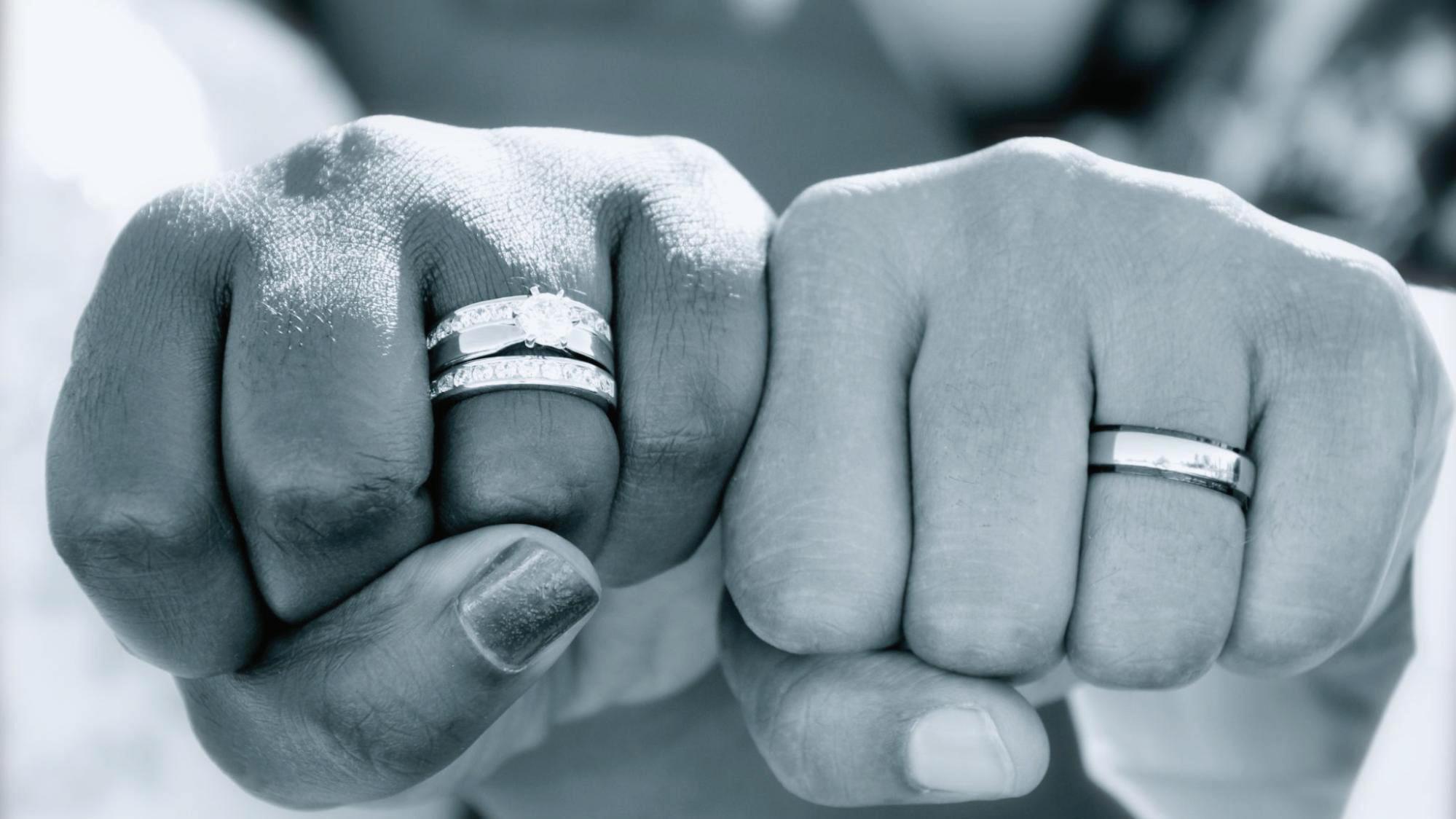
Africa is the epicenter of global diamond production, a majority of which is managed by the aforementioned De Beers. Africa produces half of all diamonds; since diamond mining began in 1866, Africa has produced $158 billion worth of diamonds. That’s 1.9 billion carats.
So, diamonds come from Africa. Who cares, right? What’s the big deal? The issue with mined diamonds is multi-faceted. When the child of a Dutch farmer found the first 22-carat diamond in what’s now South Africa back in 1866, it kicked off a diamond rush. Miners flocked to the area soon after the second diamond was discovered (an 83-carat) and ever since, Africa led the world in diamond production. But part of the problem is De Beer’s monopoly over the industry. With so much control over the market, De Beer oversaw (and still oversees) much of the supply-and-demand and pricing.
Why You Should Consider Ethical and Sustainable Diamonds by Stephanie Osmanski on GreenMatters.com. Read the unedited story at tinyurl.com/2ep48knd.
Improper diamond mining practices can lead to soil erosion and strip the soil of its natural nutrients. Soil erosion contributes to deforestation. Dust and water pollution are also side effects of unsustainable diamond mining. Such land degradation—a decline in the productive capacity of the land and therefore its value as an economic resource—can cause proneness to flooding.
In Angola, Central Africa, the environmental effects of diamond mining were so severe, local populations were actually forced to relocate.
Land degradation is a big part of why diamond mining is unsustainable. There are several methods to diamond mining, all of which are questionable. One method, called alluvial diamond mining, occurs inside river banks and beaches—secondary deposits of diamonds. Alluvial mining calls for walls to be built to divert the river’s flow; then the body of water is drained. Bulldozers come in and dig through the leftover dirt, looking for diamonds in the now-drained river.
Another type of mining is diamond pipe mining, which requires shanks inserted into the ground with the goal of locating ore-bearing pipes. Large amounts of soil are then extracted, which contributes to the land degradation of the area.
Sustainable diamonds do not require the unsustainable, negative mining processes that mined diamonds do. In fact, sustainable diamonds seek to eradicate the negative social and environmental repercussions of traditional diamond ming. In order to find sustainable diamonds, there are a few choices. First and foremost, you can opt for synthetic diamonds or lab-created diamonds. Synthetic diamonds are an environmentally friendly choice because they require no mining; the East Coast of the United States is a lucrative hub for such diamonds. Synthetics also contain all the same physical, chemical, and optical characteristics as mined diamonds. Plus, synthetic diamonds have all the sparkle of the real thing at a lower cost. Synthetic diamonds are typically 42 percent cheaper than the real thing.
Recycled diamonds are another affordable and sustainable option. Jewelers can reset or sometimes even recut a used stone to fit a more modern ring band. These diamonds do not require new mining. Sure, this option doesn’t ensure that the original diamond was sustainably sourced, but it does keep you from contributing to an industry dependent on unsustainable practices and unethical treatment of workers. Other types of sustainable diamonds require that they were sustainably sourced. If a diamond was sourced in Canada, Russia, Namibia, Botswana, or South Africa, that is a good indicator that your sparkler was sustainably sourced.
“Blood diamond” and “conflict diamonds” are terms that have been coined for a reason. These phrases refer to diamonds mined in war zones that are then sold to finance rebel movements against recognized governments. Both terms seek to bring awareness to the horrible consequences of diamond production. Sadly, blood diamonds still exist today. From a humanitarian perspective alone, ethical and sustainable diamonds should appeal to you. After all, the conditions diamond miners suffer is a far cry from anything the Fair Trade Certification would approve.
The monopoly De Beer has on the diamond industry is crucial to understanding the poor conditions, treatment, and small wages of diamond miners. De Beers pays a small tax to the South African municipalities from which the diamonds are sourced; a study by the University of Manchester found that De Beers was severely shortchanging areas that significantly contribute to the diamond mining trade. But De Beers isn’t the only guilty party; diamond mining around the world is dangerous, unsustainable, and as an industry, doesn’t value its workers. What’s worse: miners are treated very poorly; when paid, diamond miners wages in Zimbabwe add up to $277 monthly, but a lot of the time, workers go unpaid. In fact, in some countries, the diamond mining industry relies heavily on slave labor; in places like Liberia, Zimbabwe, and parts of India, children are enslaved to do the diamond mining work. To add insult to injury, diamond miners often don’t have access to health care, insurance, or acceptable living conditions. Physical abuse is rampant in diamond mining camps and sex trafficking is prevalent, which contributes to the high rates of HIV and other STDs amongst miners. In one diamond mine in Surat, India, 10 percent of male miners had at least one STI.
There are several ethical alternatives to mined diamonds. Sustainable diamonds can include synthetic gems made in a lab, recycled diamonds that have been reused, recut, and reset, or diamonds that have been ethically and sustainably sourced.
Diamonds sourced from Canada are typically required to adhere to the highest environmental and humanitarian standards. Some diamond mines in Canada, like Ekati and Diavik, rely on wind farms to generate most of their energy and are audited by the Responsible Jewelry Council. Other sustainable diamond sources to look for include Russia and Botswana Sort diamonds, which come from either Namibia, Botswana, or South Africa.
There’s nothing quite like a good detective story. Usually, there’s a mystery involved, and so many pop culture detectives are memorable characters. The detective has been around in stories for centuries at this point. Books, TV, and films are filled to the brim with detectives. In Samuel Baum’s The Engagement Party, Katherine’s engagement ring goes missing. The party members do their best to find the missing ring, attempting to solve the puzzle and devise who may have had a motive to take it.
Below are a number of popular fictitious detectives. Which one would you hire to solve the mystery of the missing engagement ring?
We start with perhaps the most famous detective ever. Sherlock Holmes has been iconic since the days when he was the subject of stories by Sir Arthur Conan Doyle. He’s been portrayed in movies and television dozens of times. People from Basil Rathbone to Robert Downey Jr. to Benedict Cumberbatch to, um, Will Ferrell have stepped into the role. Sherlock is truly one of the most indelible characters ever created.
You do not want to be a criminal who commits murder on Columbo’s beat. No matter how clever you think you are, Columbo is smarter. Sure, he seems absent-minded and wears a rumpled raincoat everywhere. When it comes to piecing together a mystery, his appearance only serves to lead the murderer into a false sense of security.
Joe and Frank, known forever as the Hardy Boys, have been the subjects of literally dozens of novels. Through them all, the brothers are out there solving mysteries. They were the starting point for detective stories for many young readers. Our only concern is that Frank and Joe seem to have only
SOURCE
two friends, Chet and Tony, and one of the Hardys dates Chet’s sister while the other dates Tony’s.
Miss Jane Marple is the first of a couple Agatha Christie characters on this list. Chandler wrote stories about fast-talking, cynical men who got by with hustle and determination. Christie’s characters tend to be more gentle geniuses who don’t have to get as dirty. Miss Marple may be an “elderly spinster,” but she still knows how to crack a case.
The 24 Most Famous Fictional Detectives by Chris Morgan on YardBarker.com. Read the unedited story at tinyurl.com/4rybrcvj.
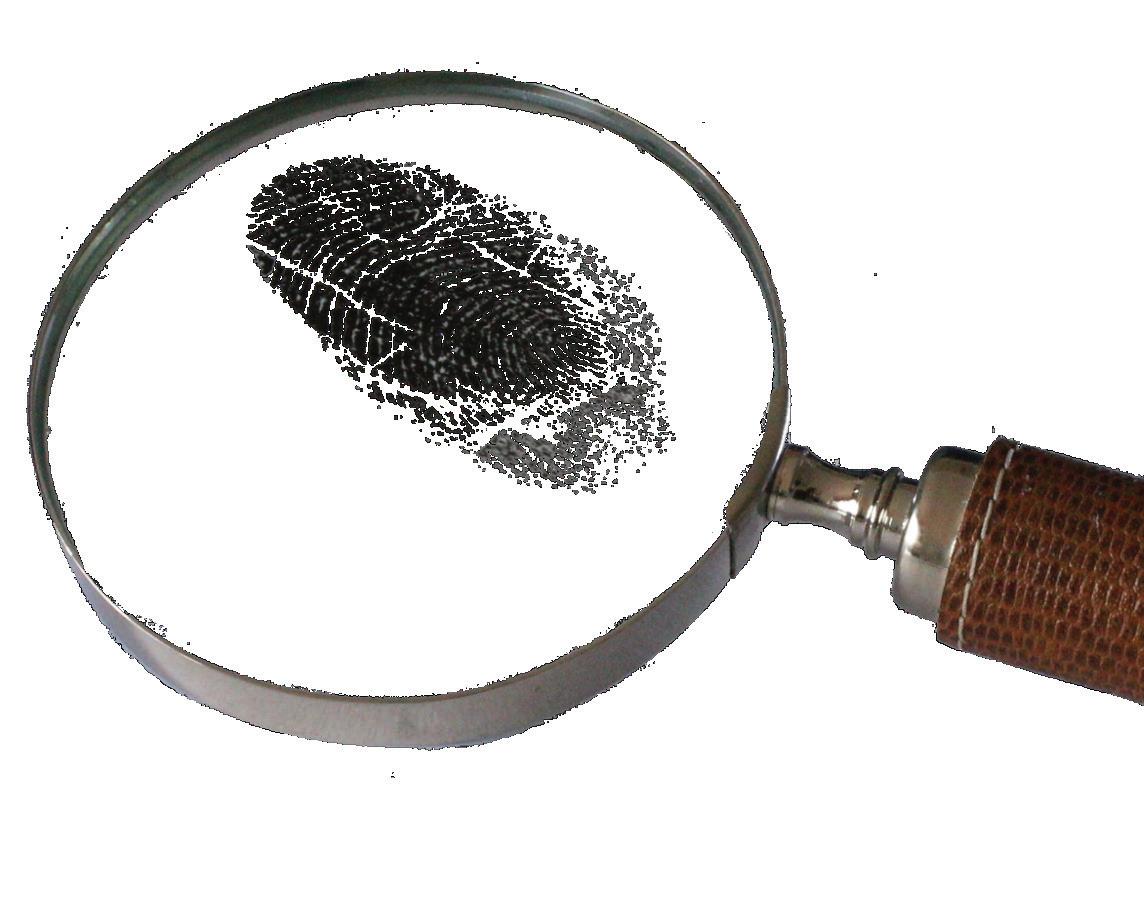
Poirot may be second only to Sherlock Holmes when it comes to literary detectives. Both have appeared many times over on TV and in film as well. Another creation of Christie, the Belgian with the remarkable mustache is maybe a tad less eccentric than Sherlock, but he may be just as smart. Otherwise, how could he have solved that murder on the Orient Express.
Humphrey Bogart has played multiple famed detectives. In addition to playing Marlowe, Bogie stepped into the shoes of Sam Spade in The Maltese Falcon. The noir detective was first brought to life by writer Dashiell Hammett. Some even say Chandler’s Marlowe was inspired by Spade.
Leroy Brown, known to most as Encyclopedia Brown, makes Nancy Drew and the Hardy Boys look like slow starters. Brown is a true boy detective, making him a perfect protagonist for young readers. Mostly he exists in books, which consist of a series of short stories. However, there was a brief HBO show in 1989, though most of us still think of Encyclopedia from the books we read as children.
The USA Network turned itself into the place for light procedurals for several years. This “blue skies” era began with Monk, though the premise isn’t as breezy as you might think. After his wife’s
murder, Detective Adrian Monk develops a serious collection of tics and phobias, including Obsessive-Compulsive Disorder. Tony Shalhoub won multiple Emmys for his work on Monk
Ezekiel “Easy” Rawlins is a Los Angeles private eye (unlicensed, for the most part) who solved cases from the 1940s through the 1960s. He has a lot in common with other hardboiled detectives. The one big difference? Walter Mosley’s popular character is black, giving Rawlins’ adventures a very different perspective from somebody like Marlowe. There’s been one notable Rawlins adaptation so far, the Denzel Washington-starring “Devil in a Blue Dress.”
Hey, we said famous detectives. We said nothing about them being good at their job. Inspector Clouseau certainly is not that. In fact, he’s quite bumbling and accident-prone. You would know him from many of the Pink Panther films, either with Peter Sellers in the role or Steve Martin, perhaps depending on your age.
Does Batman have a bunch of gadgets, including the Batmobile? Absolutely. You may think of him primarily as the Caped Crusader, a true superhero. Ah, but what is one of the monikers that has been given to Batman? They call him “the world’s greatest detective.” How could we not include him?
Which detective would you like to see solve the case of the missing engagement ring?
After seeing The Engagement Party, which detective from the above list would have solved the mystery: The fastest? Most accurately? The most fun to watch solve? Causing the least amount of damage to the surroundings?
Los Angeles families are invited to Geffen Playhouse to enjoy a free morning at the theater! Parents, caregivers, and children will participate in storytelling activities with Geffen Playhouse teaching artists.
This family literacy workshop is hosted by Geffen Playhouse and the Barbara Bush Foundation for Family Literacy.
SATURDAY, NOVEMBER 4 • 9:00AM–12:30PM

FREE TO ATTEND • RECOMMENDED FOR AGES 8+
RESERVATION IS REQUIRED TO SAVE YOUR SPOT! Visit geffenplayhouse.org/tellstories for more information.

For the 2023/2024 Season, Geffen Playhouse Education & Community Engagement has partnered with the Los Angeles-based nonprofit Get Lit. Get Lit ignites student engagement, literacy, and young voices around the globe using the power of spoken word, technology, and community.
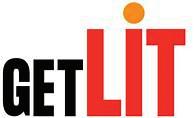
Every Study Guide this season will spotlight written response pieces to Geffen Playhouse Gil Cates Theater productions, crafted by students enrolled in Get Lit Players literacy programs. Get Lit receives complimentary tickets to all Geffen Playhouse Gil Cates Theater productions as part of our Lights Up & Access Community Engagement Programs. This first response is to the final show of the 2022/2023 Season, Katori Hall’s The Mountaintop.

The next Get Lit written response, for Samuel Baum’s The Engagement Party, will be shared in the Study Guide for this season’s next production, POTUS: Or, Behind Every Great Dumbass Are Seven Women Trying to Keep Him Alive, in January 2024.
The brightest star left us his baton, Dr. Martin Luther King Jr. To those close to him, Just Michael Just a friend in need of a Pall Mall and a cup of coffee to continue the race
Just a man
The brightest star left us his baton, Embedded with the hopes and dreams of equality and road map to follow The destination is the Promised Land, so far away, we can barely see the tips of The Mountaintop
The relay race to the Promised Land will be a long and hard one
Every breathing second is pacing us for the baton handoff Every long and staggering stride is carrying us closer to continue the race.
The road will be just as beautiful as we are and just as ugly as we are too
We will continue the race like prophecy, like
We can stop America from going to Hell! We will stop America from going to Hell! Stop America from going to hell!
How can we stop America from going to hell?
How can we stop?
How can we exist?
In the Promised Land, Everyone can exist
Everyone can be beautiful
We can show up as our ugly-beautiful selves so the world can see how ugly-beautiful it is too and, see
How we exist matters
How we kiss the land with our lavish lips
How we save the world with our warmth
Caressing it with hands that tell stories of why we fight for it
We can place our wings side-by-side
Torn, damaged, plucked at And still rise
In the Promised Land, there will be
No more blue caps kneeling on necks
No more children ripped from their roots
No more hands robbing cradles
No more laws protecting loaded gun chambers over the hearts of our youth
In the Promised Land, there will be
More Crayola children nestled together neatly sitting in solidarity
More voices echoed by the everyday people of our world
More love is love, love is love, love is love
More justice for those who gave up their seats
More leaders who speak for our diversity
For the Chicanos, the Angelenos, and the children of lost angels
The brightest star left us his baton
The baton is in our generations' grasp now
The descendants of survivors in the Vietnam war
Those who came in unity for George Floyd, Michelle Alyssa Go, and other robbed souls, Those still mourning hate-crimed innocents
Burnt out gifted kids
Those who came from poverty, soot and ashes, It is our time to place our wings side-by-side
Torn, damaged, plucked at And, rise together.
The baton is in our generations' hands now
It will hold the hand and guide for many more to come Pick up the baton
Another soul will come Pick up the baton
it’s in our generations' hands now
Pick up the baton-Pick up the baton
Pick up the baton-Pick up the baton
Pick up the baton
It will be the road map for many more to come Pick up the baton
The baton is in our generations' hands now And it is our turn to pick it up and run with it
The baton passes on
ALEX LIM (he/him) is a Teochew Asian-American High School sophomore poet from Los Angeles. Alex participated in the 2023 Get Lit Classic Slam representing High Tech LA. He is the social media manager for his poetry Slam team and takes filming and media classes. He enjoys watching films and aspires to be a screenwriter. Alex’s favorite poets are Hieu Minh Nguyen, Chen Chen, and Patricia Smith. Alex enjoys incorporating food into his poems, wants to send a message, and writes what people can relate to.

What is your position and how long have you been at the Geffen?
My position at Geffen Playhouse is Education Associate in the Education & Community Engagement Department.
What educational, artistic, and professional experiences led to you working at the Geffen?
I was cast in Geffen Stayhouse production of Citizen Detective in 2020, which was the professional experience that led me to work here at the Geffen. I enjoyed working with the people at Geffen Playhouse so much, that it encouraged me to apply for an internal admin position with them!
What are your primary responsibilities as Education Associate?
My primary responsibilities as the Education Associate are assisting the Director of Education and Manager of Community Engagement with whatever admin help they might need—from planning student matinees to coordinating the teaching artists’ schedules, and everything in between.
What key skills and dispositions do actors need to possess in this day and age?
The key skills actors need to possess in this day and age are flexibility and a sense of humor, always.
How important is theater in your daily life?
Theater is very important in my daily life—on top of working in Geffen’s Education & Community Engagement Department, I am also an actor and playwright!

Was there a pivotal moment when you realized you wanted a life in the arts or did it occur incrementally?
I tentatively chose theater as one of my majors in college, and by the time I graduated, I knew I would be pursuing a life in the arts!
What do you find most challenging about your work?
I think being a “multi-hyphenate” (actor-writer-director-educator) can be quite challenging in every regard— but I wouldn’t change it for anything.
What do you find most rewarding?
As the Education Associate, I find the Geffen’s student matinees and the students’ reactions to the plays to be the most rewarding part of my job. I love hearing their questions at the talkbacks!
Going to the theater is a unique experience, and we all need to be mindful of “audience etiquette.”
THE AUDIENCE’S ROLE The audience plays an essential role during the performance of a play. Without an audience, the actors are only rehearsing. Audience members’ concentrated silence and responses, such as laughing and applauding, provide energy to the actors as they bring their performance to life.
THE AUDIENCE’S EXPERIENCE Since the actors can hear the audience so clearly, it is important to engage in behaviors that will not disturb or distract them—nor fellow audience members. These actions include:
• Turn off cell phones during the performance
• Remain seated until the end of the show (unless it is a true emergency)
• Eating or drinking before or after the show, or during intermissions
• Unwrapping candy or cough drops before play begins
• Keep your focus on the action happening onstage.
USE OF SOCIAL MEDIA We appreciate you sharing your Geffen Playhouse experience via social media, and kindly request that you do not do so inside the theater, where the use of electronic devices is prohibited.
We recommend that you post your responses and thoughts in the lobby after the performance, and invite you to tag @GeffenPlayhouse and use #GeffenPlayhouse to share your experience and to continue the conversation with us online.
AUDIENCE AWARENESS ACTIVITY Before going to the Geffen Playhouse for the first time, compare and contrast the experience of seeing a live play with:
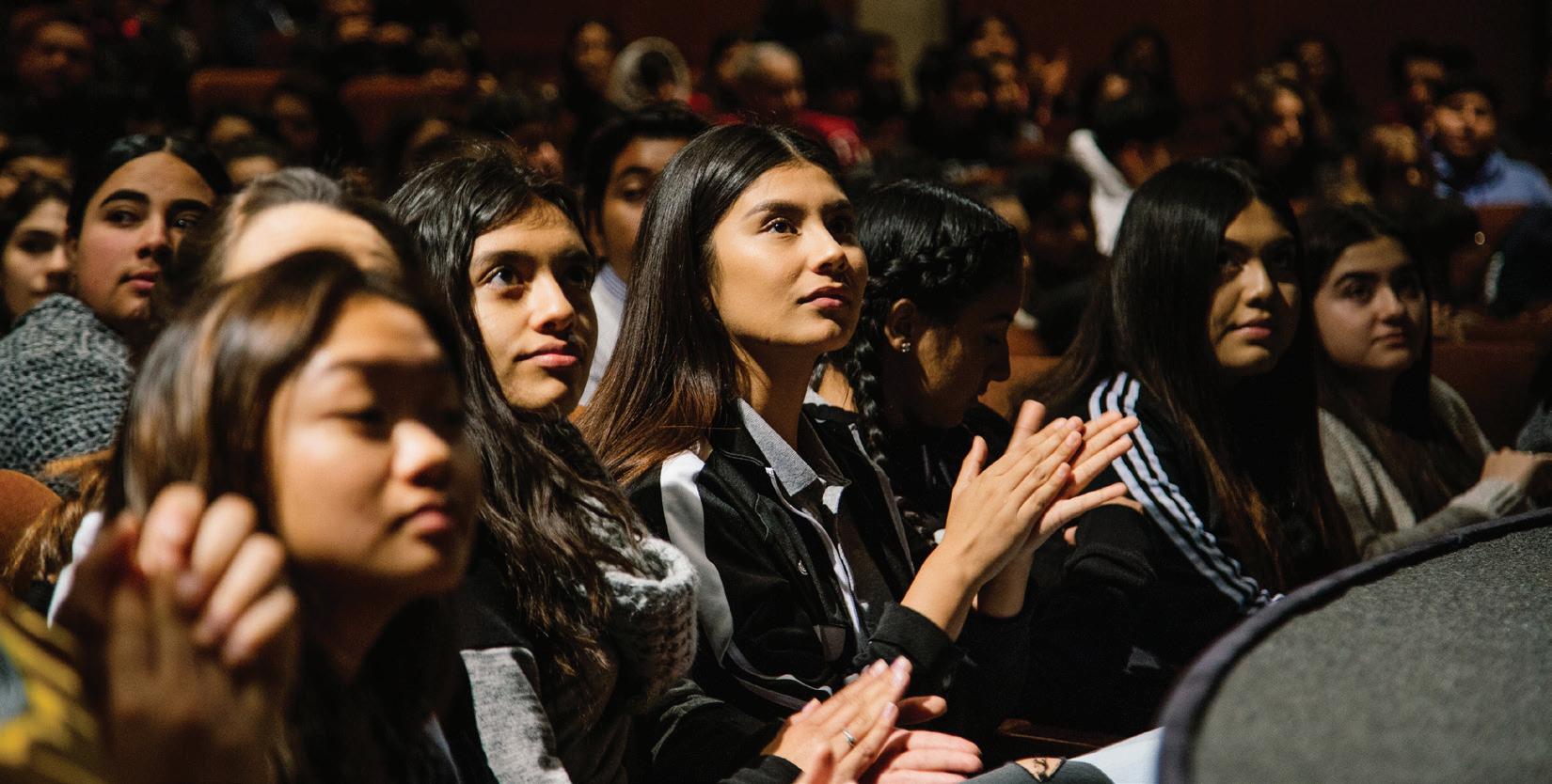
• going to the movies
• attending a live sporting event
• watching television
If you were onstage performing in a play, how would you want the audience to behave?
Depending on the time available and your participants’ interests, guide them to respond to questions selected from those suggested below. Encourage everyone to participate and respect differing opinions. Individuals can share their thoughts with a partner or in a small group. Ask for several volunteers to share their groups’ answers with the larger group.
• Overall, how did you feel while watching this show? Engaged? Conflicted? Amused? Inspired? Provoked? Put off? What made you feel this way?
• Have you ever been to an event that did not go the way it was planned? How were things resolved?
• In the play, Josh invades others’ privacy and goes through their coats and purses. Were Josh’s actions called for? Did you agree with his decision to secretly investigate? What level of trust was broken? Why?
• After reading any of the accompanying articles compiled in this Study Guide, what new facts or information was most surprising to you? Why?
• What did you enjoy most about the play? What did you find difficult to enjoy? Why? (Provide evidence from the production.)
• How would you describe the inner life of each character in the play? Are they conflicted? If so, how, and why?
• Did you identify or empathize with any of the characters? If so, which character(s) and why? If not, why not?
• Have you ever been accused of a crime you did not commit? What did you have to do to clear your name?
• What did you appreciate most about the performances by the actors?
• How did the set, props, costumes, and music contribute to the impact of the show?
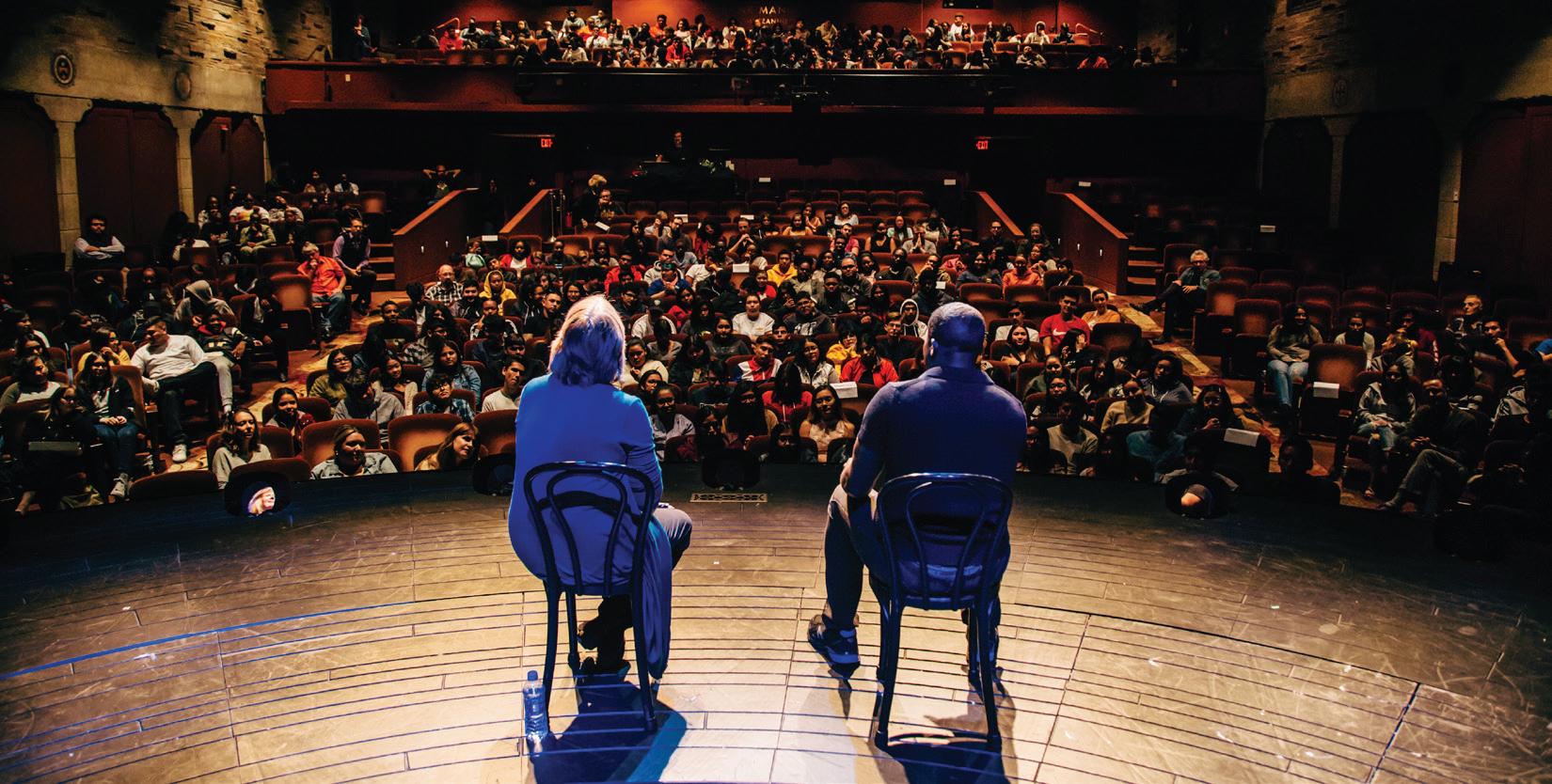
• You have a $500 budget to throw an engagement party. Do a cost breakdown of: decorations, food, drinks, party favors, entertainment, and anything else you think would make the party a success. How much would you budget for each aspect of the party?
• Would you recommend this production of The Engagement Party to other theatergoers? Why or why not?
STUDY with Geffen Playhouse Education & Community Engagement Study Guides found at www.geffenplayhouse.org/studyguides
CALL the National Domestic Violence Hotline at 1-800-799-SAFE (7233) or 1-800787-3244 (TTY) for support, shelter, safety planning, or referrals to other services.
DISCOVER 75 of the Best Marriage Advice and Tips by Marriage Therapists at tinyurl.com/y74bhnep.
EDUCATE YOURSELF about workplace harassment from the U.S. Equal Employment Opportunity Commission at www.eeoc.gov/harassment.
EMBRACE the truth about blood diamonds at tinyurl.com/3h7zjcuh.
GO TO www.getlit.org to learn more about their student literacy programs. KNOW about some alternatives to diamonds at tinyurl.com/4pwvnsu4
LOCATE your local library to learn more about Sherlock Holmes, The Hardy Boys, and Nancy Drew at www.lacountylibrary.org/library-locator.
REACH OUT to the Los Angeles Department of Mental Health if you are suffering from overwhelming grief or loss by visting tinyurl.com/2ch3ppz2.
Geffen Playhouse Education & Community Engagement Programs are made possible in part by a grant from the City of Los Angeles Department of Cultural Affairs, and by the California Arts Council, a state agency, in addition to support from the following generous individuals and institutions:
Anonymous (3)
Claudia Apelfeld
The Baek Family
Judith & Thomas Beckmen
Madelyn Bennett & Eric Gibson
Carol J. Bradshaw
Mara W. Breech Foundation
Dr. Wallace P. Brithinee
Laurrie Brooke
Janet & Mark Brown
Diana Buckhantz and the Vladimir and Araxia
Buckhantz Foundation
The Barbara Bush Foundation for Family Literacy
Mark & Lorena Carlson
Jane Cates
Steven Cerasale & Mary Katherine Cocharo
Diane Chernansky
Cindy Clark
James Clark
Carl Cohn
Gail Cottingham
Shawn Cunningham
Dwight Stuart Youth Fund
Mimi & Marvin Freedman
Lynn & Barry Friesen
The Rosalinde and Arthur Gilbert Foundation
Linda & Tom Givvin
ICM Community Partners Foundation
Jessica Kaltman & Robert Reznik
The Marilyn & Jeffrey Katzenberg
Fund for Arts Education
Trisha Kelley
Rena & Craig Leeds
Gina Maria Leonetti
Hugh & Gail Linstrom
Renee Lonner
Eric & Eva Plaza Mandel
Stewart Mayeda
Cynthia Melville
Norma & Larry Meyers
Mintz Family Fund
Dr. Paula C. Moseley
National Endowment for the Arts, in partnership with Mid-America Arts Alliance

Kenneth T. and Eileen L. Norris Foundation
Holly Rice & Vince Gilligan
Lindy Robbins
Lawrence Ross & Linda Nussbaum
Wil Rosser
Gary & Karen Schneider
The Edward A. & Ai O. Shay Family Foundation
In Memory of Michael Sherman
Gussie Paster Sitkin
Deborah & Paul Smith
Melvin Spears
Reba St. Clair
The Taylor Family Foundation
U.S. Bank Foundation
Barbara Vickery & Martin Shapiro
The Walt Disney Company
Aaron Widera